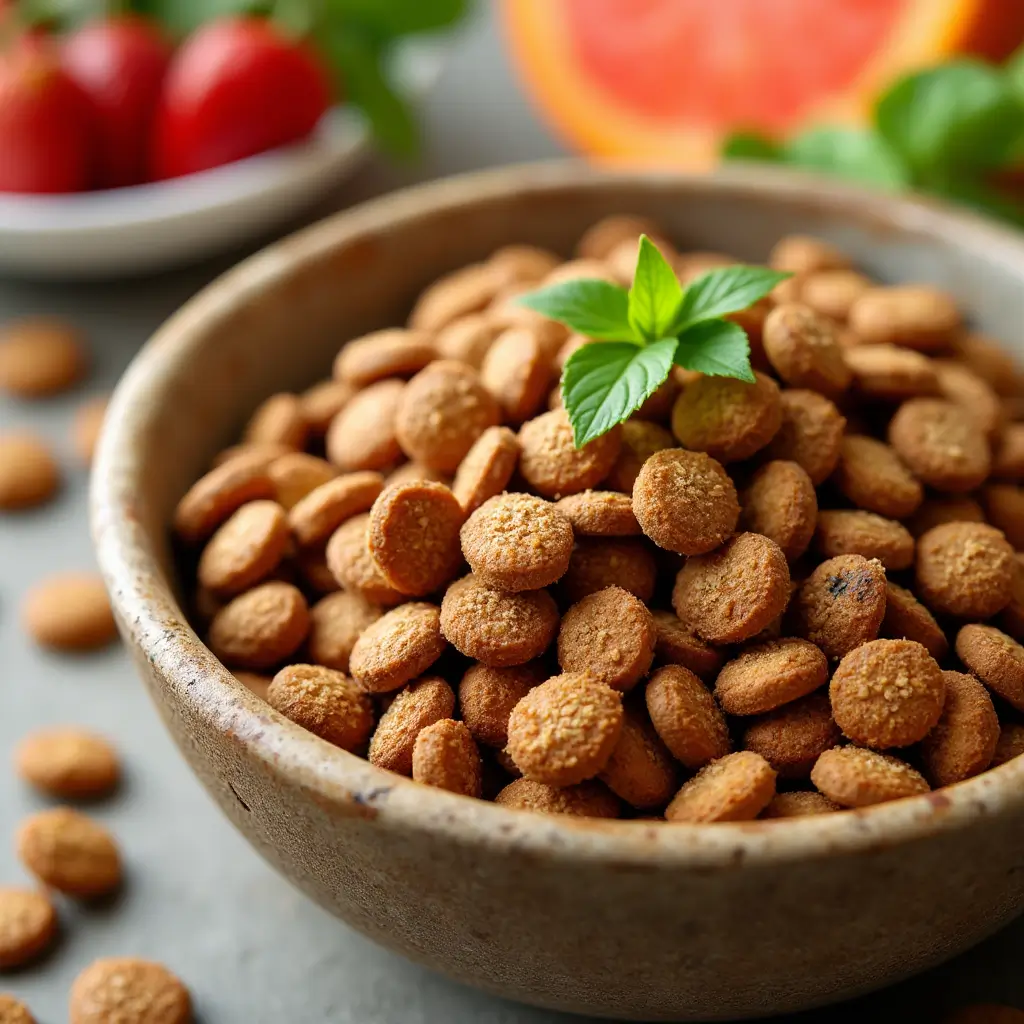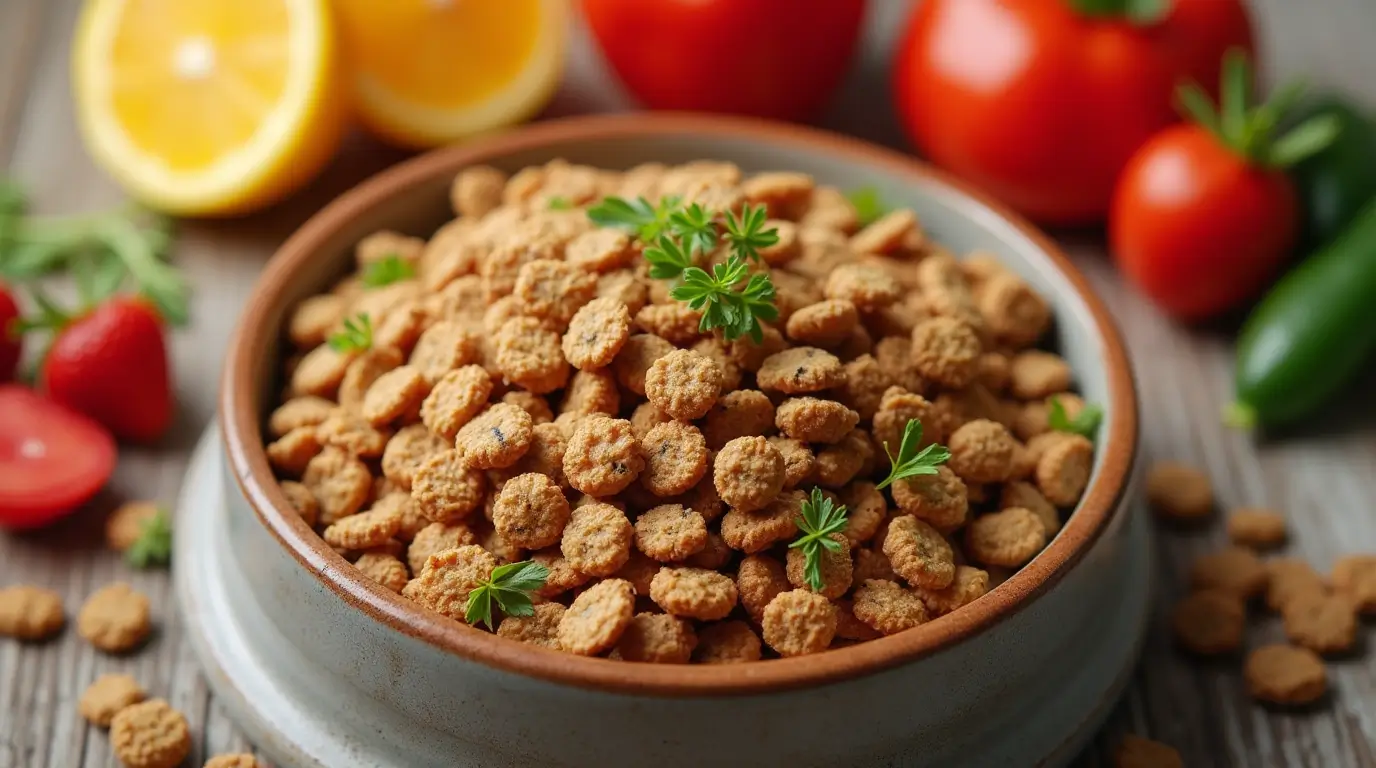Discover Everything you need to know about cat kibble ?
As a cat owner, your furry friend’s well-being is likely a top priority. One crucial aspect of their health is their diet, and for many pet parents, cat kibble is the go-to option. But not all kibble is created equal, and finding the right one can feel overwhelming. This guide is here to help you make informed decisions about cat kibble, so your beloved feline stays healthy, happy, and purring.
Table of Contents
What Is Cat Kibble?
Understanding Cat Kibble
Cat kibble, commonly referred to as dry cat food, is a highly processed type of pet food made by combining ingredients like meat, grains, and supplements into small, crunchy pellets. It offers convenience, affordability, and a long shelf life compared to other types of cat food.
While kibble is a popular choice for many cat owners, it’s essential to know what goes into it and how to choose the best option for your cat’s specific needs.
How Cat Kibble Is Made
The Manufacturing Process
Cat kibble begins with a mixture of ingredients, including meat (or meat by-products), grains, vegetables, and added nutrients such as vitamins and minerals. This mixture is then:
- Cooked at high temperatures to create a dough-like consistency.
- Shaped into small pellets using an extrusion machine.
- Dried to remove moisture, which extends shelf life.
- Coated with fats, oils, or flavor enhancers to make it more palatable for your cat.
The process ensures that the kibble is shelf-stable and nutritionally balanced, but it also means that some nutrients may be lost during cooking, which is why additional supplements are added.
Types of Cat Kibble
1. Standard Dry Cat Food
This is the most common type of kibble available. It’s affordable, easy to store, and comes in a variety of flavors and formulas. Standard kibble is suitable for most cats but may contain fillers like corn or soy.
2. Grain-Free Cat Kibble
Grain-free options are designed for cats with grain sensitivities or allergies. These formulas replace grains with alternative carbohydrates like sweet potatoes or peas. While grain-free kibble can be beneficial for some cats, it’s not always necessary unless your cat has specific dietary restrictions.
3. Specialty Formulas
Many brands offer kibble tailored to address specific health concerns, such as:
- Weight management: Lower calorie options for overweight cats.
- Urinary health: Formulas that reduce the risk of urinary tract issues.
- Hairball control: Designed for long-haired cats prone to hairballs.
The Nutritional Value of Cat Kibble
What to Look for in High-Quality Kibble
When shopping for cat kibble, it’s vital to pay attention to the ingredient list and nutritional analysis. Here’s what your cat needs for a balanced diet:
- Protein: Look for kibble with high-quality, animal-based protein as the first ingredient. Cats are obligate carnivores, meaning they require animal protein to thrive.
- Fats: Healthy fats like chicken fat or fish oil provide energy and support a shiny coat.
- Taurine: An essential amino acid that supports heart and eye health.
- Vitamins and Minerals: Calcium, phosphorus, and omega fatty acids are vital for overall health.
- Fiber: Helps with digestion and reduces hairballs.
Ingredients to Avoid
Not all kibble is created equal. Avoid brands that use:
- Corn, wheat, or soy as primary ingredients (look for “cat food no corn” on the label).
- Artificial preservatives like BHA, BHT, or ethoxyquin.
- Meat by-products that don’t specify the type of meat used.
Grain-Free vs. Regular Cat Kibble
Benefits of Grain-Free Cat Kibble
Grain-free kibble has become increasingly popular, but is it the right choice for your cat? Here are some potential benefits:
- Reduced Allergens: Grain-free kibble is less likely to cause digestive or skin issues in cats with sensitivities.
- Higher Protein: Many grain-free formulas contain more animal protein, which aligns with your cat’s natural diet.
When Grain-Free Isn’t Necessary
While grain-free kibble can be beneficial for some cats, it’s not a one-size-fits-all solution. Healthy cats with no allergies or sensitivities can thrive on regular kibble, provided it’s high in quality.
How to Choose the Right Cat Kibble for Your Cat
Factors to Consider
Selecting the best kibble for your cat depends on their unique needs. Consider the following:
- Age: Kittens, adults, and senior cats have different nutritional requirements.
- Health Conditions: Cats with specific health issues may need prescription or specialty diets.
- Activity Level: Active cats may require more calories than sedentary ones.
Top-Rated Dry Cat Food Brands
To help you narrow down your options, here are some highly recommended brands:
- Hill’s Science Diet: Known for its science-backed formulas.
- Blue Buffalo: Offers grain-free and natural options.
- Purina Pro Plan: A trusted brand with specialized formulas.
- Royal Canin: Tailored to specific breeds and health concerns.


Making Cat Food at Home: A Kibble Alternative
If you’re considering making your own cat food, it’s important to ensure it’s nutritionally balanced. Here’s a simple recipe for homemade kibble:
| Ingredient | Quantity | Purpose |
|---|---|---|
| Chicken (cooked) | 1 cup | Protein source |
| Cooked sweet potato | 1/2 cup | Carbohydrate source |
| Carrots (grated) | 1/4 cup | Vitamins and fiber |
| Fish oil | 1 tsp | Omega-3 fatty acids |
| Taurine supplement | 1 capsule | Essential amino acid |
Instructions:
- Blend all ingredients into a dough.
- Roll out and cut into small pieces.
- Bake at 350°F until crunchy.
- Store in an airtight container.
FAQs About Cat Kibble
Is dry cat food better than wet food?
Both have their pros and cons. Kibble is more convenient and cost-effective, while wet food provides hydration.
What is the best dry cat food for my cat?
The best kibble depends on your cat’s age, health, and preferences. Always choose high-quality brands with real meat as the main ingredient.
Should I feed my cat grain-free kibble?
Grain-free is ideal for cats with allergies or sensitivities but isn’t always necessary for healthy cats.
How do I store cat kibble?
Keep it in a cool, dry place and use an airtight container to maintain freshness.
Conclusion
Feeding your cat the right kibble is one of the most important decisions you’ll make as a pet parent. By understanding the ingredients, nutritional value, and types of kibble available, you can ensure your feline friend gets the best possible diet. Remember, your cat’s health starts with what’s in their bowl.
Take action today: Evaluate your cat’s current food and consider upgrading to a high-quality kibble that supports their overall health. Consult your veterinarian for personalized recommendations.
Your cat deserves the best—start making informed choices now!

